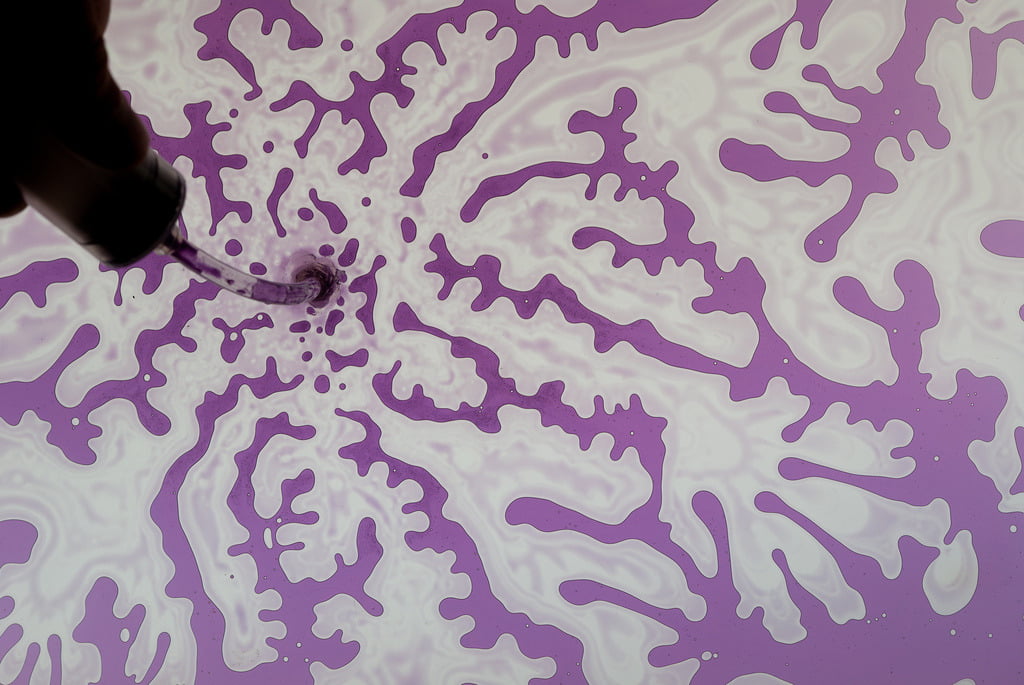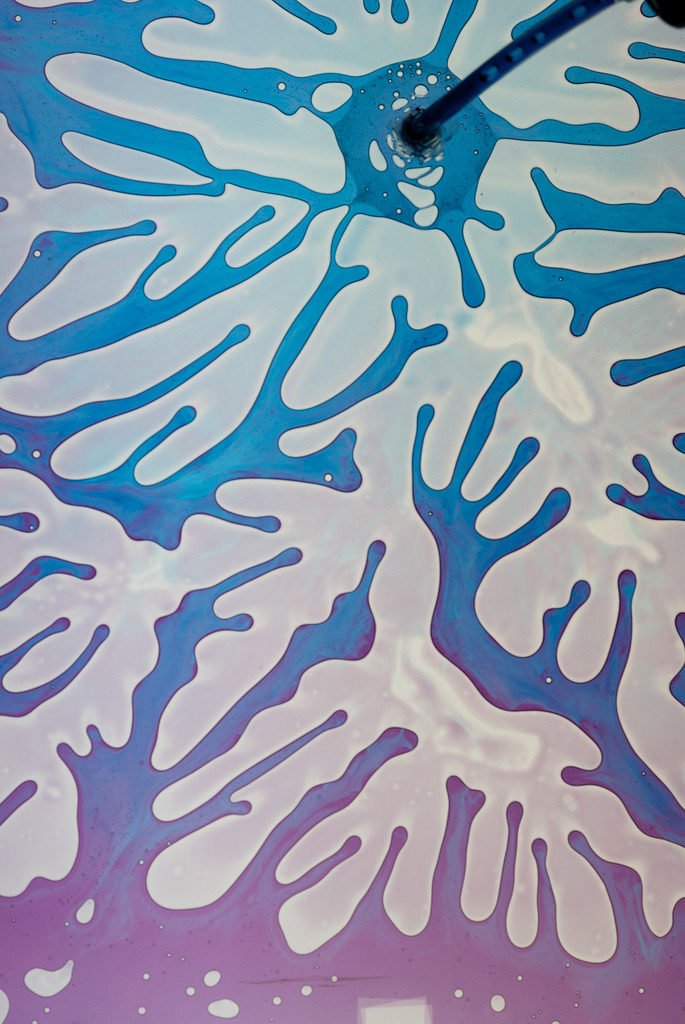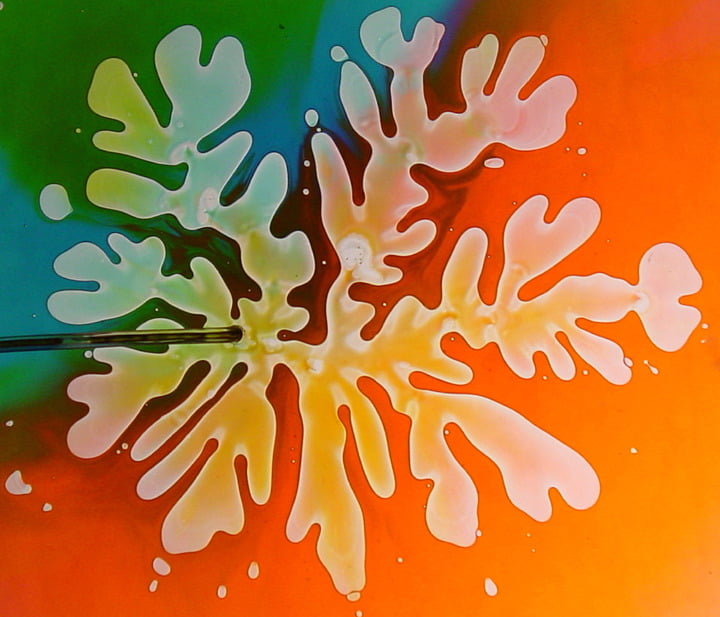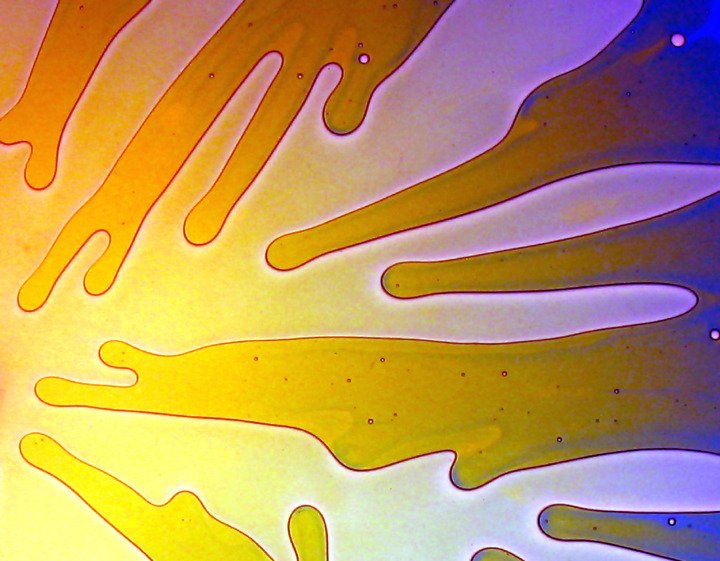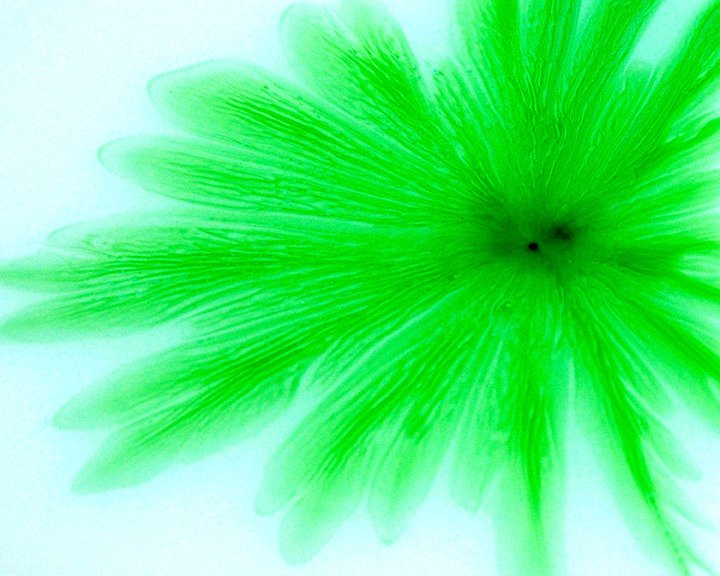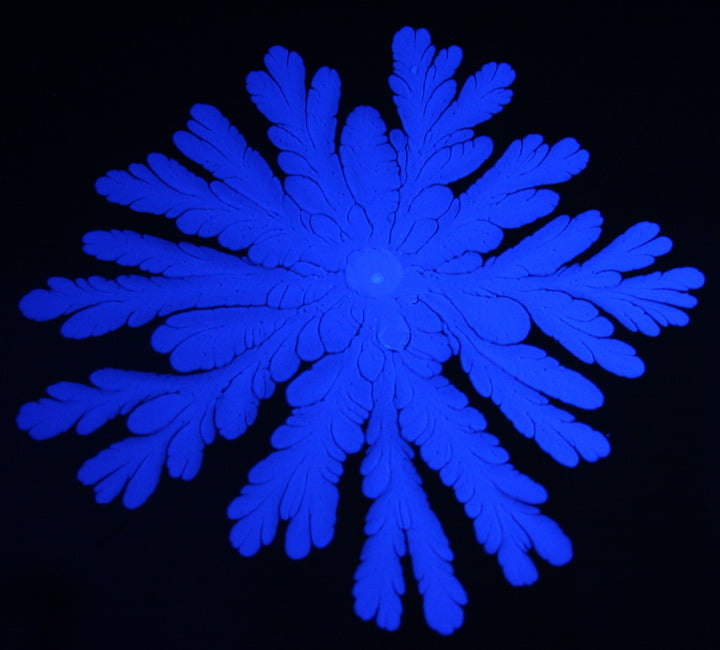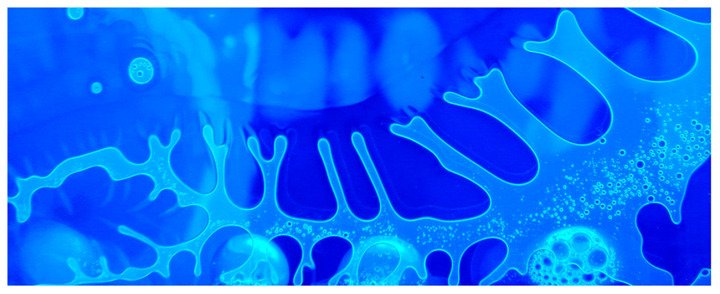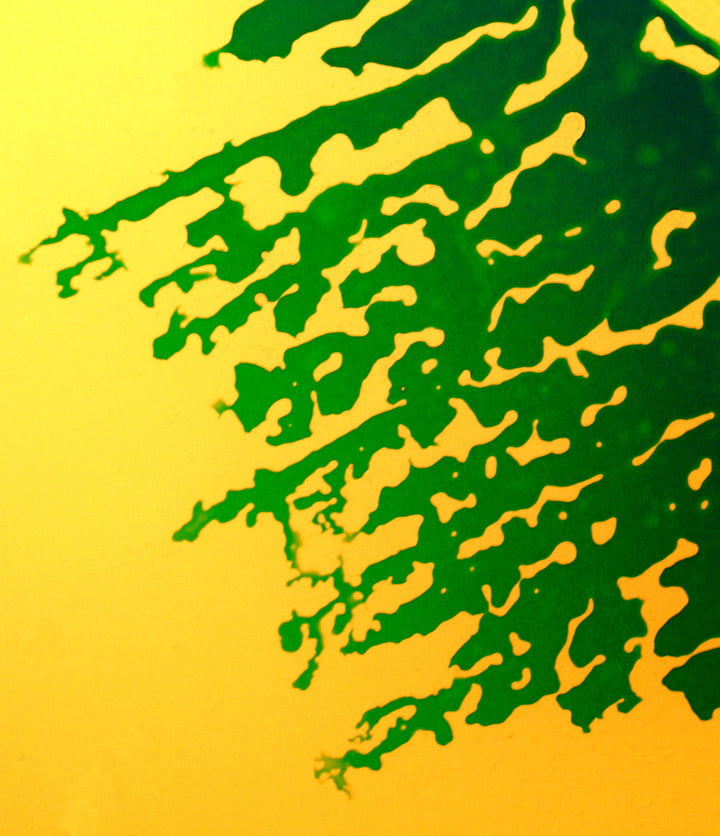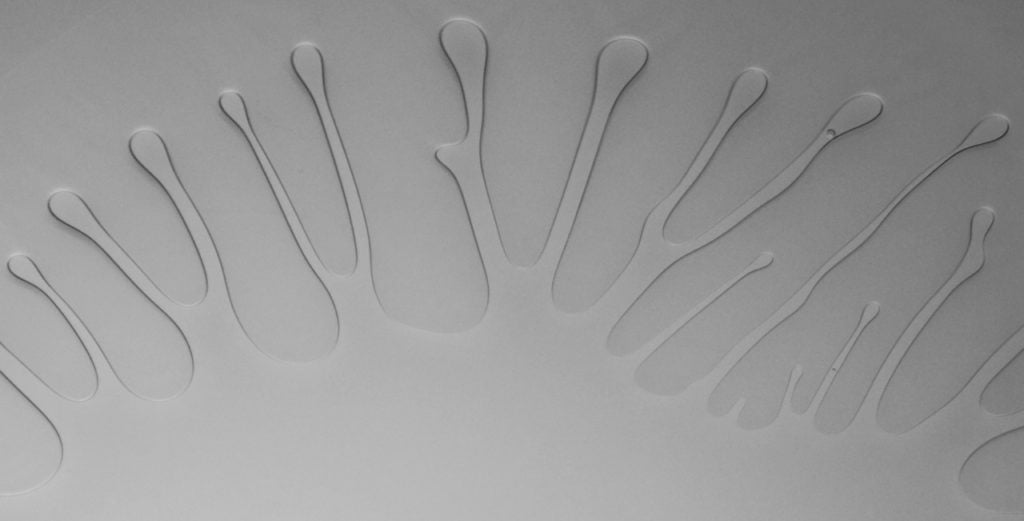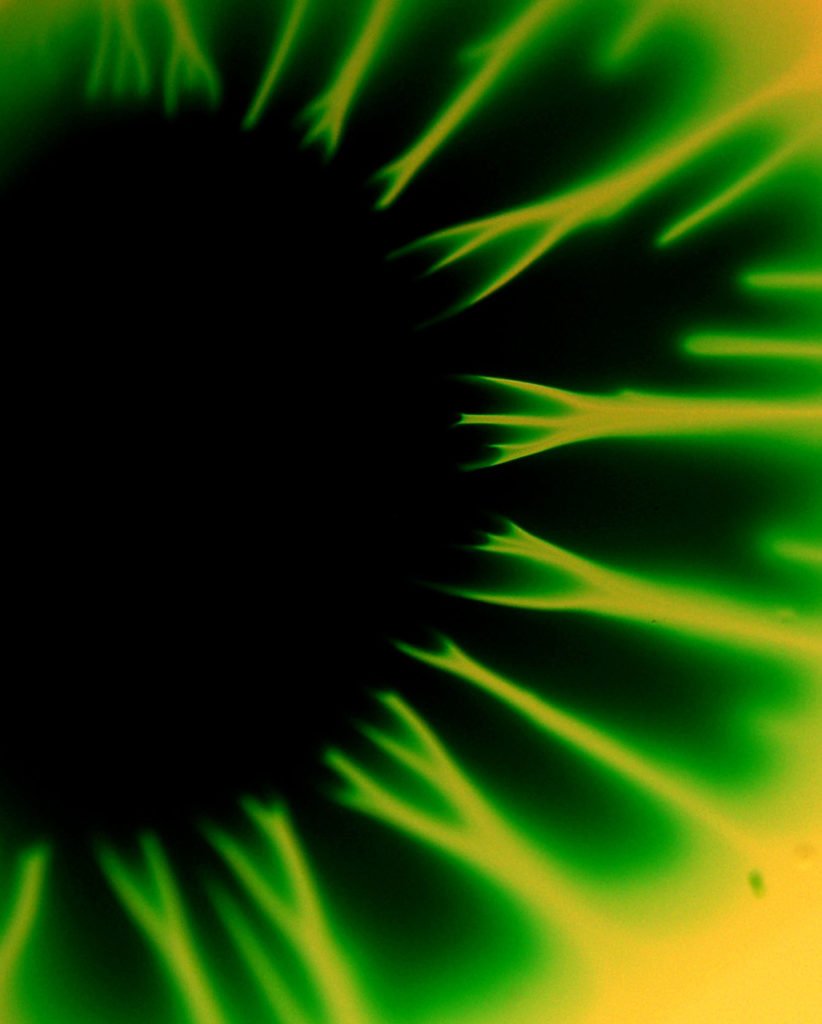Varying the rate of injection of air into a wet granular mixture contained in a Hele Shaw cell results in very different flow patterns. At low injection rates, stick-slip bubbles form. As the injection rate increases, patterns are affected by “temporal intermittency” where continuous motion is occasionally interrupted by jamming. Increasing the injection rate still further results in Saffman-Taylor-like fingering. #
Tag: Saffman-Taylor instability

Viscous Fingers
A Hele Shaw cell is little more than two glass plates separated by a thin layer of viscous fluid. The cell serves as a good test bed for viscous, low Reynolds number flows such as those found in microfluidics. Here a less viscous fluid is injected into the center of the cell, causing the finger-like protrusions of the less viscous fluid into the more viscous one via the Saffman-Taylor instability.

Air Injection Patterns
This timelapse video demonstrates the pattern variations occurring when air is injected into a wet granular mixture in a Hele-Shaw cell. When the filling fraction–the percentage of the total volume between the glass sheets taken up by grains–is relatively small, the pattern formed by the injected air develops continuously and looks similar to Saffman-Taylor fingering seen in pure fluids. When the filling fraction is larger, however, the pattern forms in an intermittent fashion with new stick-slip bubbles of air forming as narrow sections of granular material slip and give way. #

Flow Vis
Place a viscous fluid in the gap between two plates of glass and you have created a Hele Shaw cell. If a less viscous fluid is then injected between the plates, a fascinating pattern of finger-like protrusions results. This is known as the Saffman-Taylor instability. Because of the relative simplicity of the set-up, it’s possible to create such experiments at home using common household fluids like glycerin, dish soap, dyed water, or laundry detergent. (Photo credits: Jessica Rosencranz, Jessica Todd, Laurel Swift et al, Andrea Fabri et al, Tanner Ladtkow et al, Mike Demmons et al, Trisha Harrison, Justin Cohee, and Erik Hansen)

Viscous Fingers
The Saffman-Taylor instability occurs when a less viscous fluid is injected into a more viscous one, usually in a Hele-Shaw cell. Here oil paint and mineral spirits were painted onto flat surfaces that were pressed together before being pulled apart. The result is viscous fingering of the fluids. #

Viscous Fingers
This photo shows the Saffman-Taylor instability in a Hele-Shaw cell. Here a viscous fluid has been placed between two glass plates and a second less viscous fluid inserted, resulting in a finger-like instability as the less viscous fluid displaces the more viscous one. This is an effect that can be easily explored at home using common liquids like glycerin, water, dish soap, or laundry detergent. #

